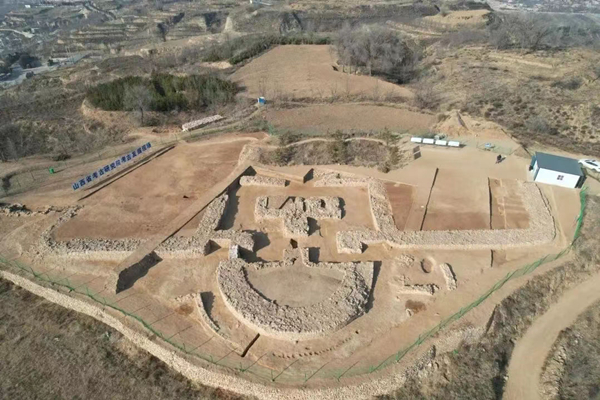Shanxi's archaeological project shortlisted for national award
Updated: 2024-03-01

An aerial view of the Bicun site in Xingxian county, Shanxi province. [Photo/Shanxi Culture Relics Bureau]
The Shanxi Provincial Institute of Archaeology's Bicun site protection and exhibition project, located in North China's Shanxi province, was recently shortlisted as an outstanding case in national archaeological site protection and exhibition.
This was announced by the Institute of Archaeology and the China Cultural Relics News Agency.
The Bicun site, covering an area of 750,000 square meters, was established in what is now known as Xingxian county during the Longshan period (about 3000-2000 BC). It is the largest stone-based settlement discovered at the entrance of the Yellow River in the Shanxi-Shaanxi plateau, and it features well-preserved city gates and central stone structures. Other highlights of the site are its double city walls and sophisticated defense system.
This site holds strong visual appeal and serves as a significant showcase of Yellow River culture in Shanxi province.
By incorporating the excavation results of the Bicun site, the Shanxi Provincial Institute of Archaeology has created an interactive exhibition. This approach vividly showcases customs and culture from 4,000 years ago, providing a more intuitive portrayal of Yellow River culture.



